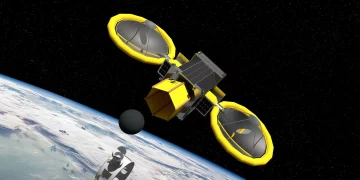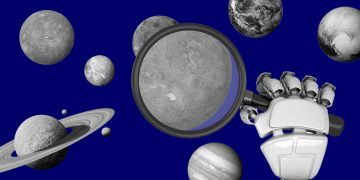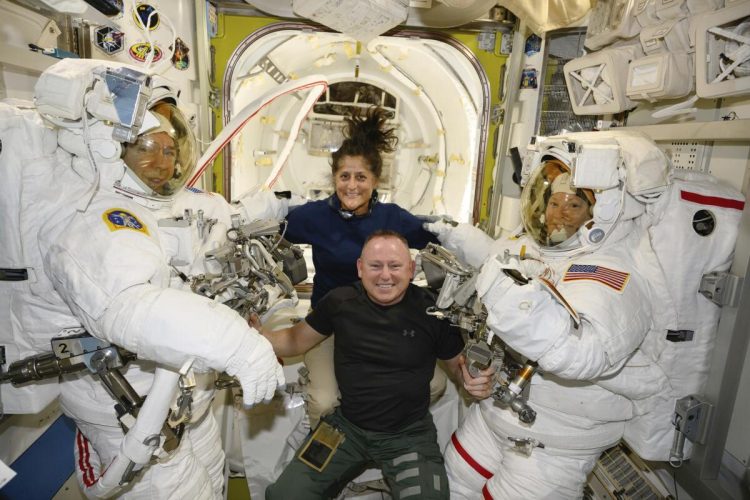The International Space Station (ISS) stands as one of the most impressive achievements in human space exploration, serving as a symbol of international cooperation, scientific discovery, and technological advancement. Orbiting approximately 400 kilometers (about 250 miles) above Earth, the ISS is not only a remarkable engineering feat but also a crucial laboratory that plays a vital role in advancing our understanding of space, human health, and the universe itself. This article will explore the ongoing importance of the ISS in space exploration and its contribution to global research, innovation, and international collaboration.
1. The Birth of the ISS: A Monument to International Cooperation
The origins of the ISS trace back to the early 1980s when the idea of building a space station was first discussed. However, it was during the 1998 launch of the first module that the ISS truly began to take shape. The station is a collaborative effort involving five participating space agencies: the National Aeronautics and Space Administration (NASA), Roscosmos (Russia’s space agency), European Space Agency (ESA), Japan Aerospace Exploration Agency (JAXA), and the Canadian Space Agency (CSA). This international partnership remains one of the largest collaborative scientific endeavors in history.
Unlike previous space stations, such as Salyut or Mir, the ISS was designed to foster global cooperation, bringing together scientists, engineers, and astronauts from across the world. This international cooperation has enabled a broad range of research, allowing countries to share knowledge, resources, and expertise that might otherwise have been difficult to achieve on their own.
2. The ISS: A Unique Laboratory in Space
The ISS serves as a microgravity laboratory, providing scientists with a unique environment to conduct experiments that would be impossible, or at least very difficult, to perform on Earth. In the microgravity environment of the station, the effects of gravity are nearly nonexistent, allowing researchers to observe phenomena and conduct experiments that reveal new insights into everything from material science to biology, medicine, and physics.
1. Biological and Medical Research
One of the most significant areas of research on the ISS is the study of the human body in space. Extended stays in the microgravity environment of the ISS allow scientists to study the effects of weightlessness on human health. These studies are crucial for understanding how space travel impacts the human body, as astronauts experience changes in bone density, muscle mass, immune function, and fluid distribution.
Research on the ISS has already led to valuable discoveries in osteoporosis, muscle atrophy, and cardiovascular health. The data collected from these studies will not only help astronauts better prepare for future long-term missions, such as to the Moon or Mars, but also provide valuable insights into how to treat or prevent these conditions for people on Earth.
The ISS has also played an important role in advancing medical technologies. For example, the research conducted on the station has led to improvements in telemedicine, including advancements in remote diagnostics and treatment. Additionally, the study of plant biology on the ISS has opened new possibilities for improving agricultural practices and food production on Earth.
2. Material Science and Engineering
The absence of gravity on the ISS also offers unique opportunities for conducting material science experiments. Many materials behave differently in space than they do on Earth, and understanding these behaviors can lead to the development of better materials for use in a variety of fields. Research in material science aboard the ISS has led to the discovery of new alloys, polymers, and manufacturing processes that could benefit industries ranging from construction to electronics.
For example, experiments with metal alloys in the station’s microgravity environment have resulted in the development of stronger, more durable materials that could be used in everything from spacecraft construction to medical devices. Other studies on the ISS have explored nanotechnology and its potential applications in energy storage, water purification, and medical treatments.
3. Space Technology and Robotics
The ISS is also a critical testing ground for developing space technology that will be essential for future deep space exploration. A prime example of this is the use of robotics aboard the ISS. Robots and robotic arms have been instrumental in assisting astronauts with tasks such as moving cargo, performing maintenance, and conducting experiments. The Canadarm2, a robotic arm built by the Canadian Space Agency, has been an essential tool for the ISS since its launch, providing a high level of precision in tasks that would otherwise be dangerous or impossible for humans to perform.
Moreover, the ISS serves as a testbed for life support systems that will be required for long-term human missions, such as to the Moon or Mars. Research on the station helps scientists better understand how to recycle water and air, grow food, and manage waste, all of which are necessary for the survival of astronauts on extended missions.

3. The ISS and International Collaboration
One of the most remarkable aspects of the ISS is its ability to bring together people from different nations, cultures, and backgrounds to work toward common scientific goals. Astronauts from countries including the United States, Russia, Japan, Canada, and the European Union have lived and worked on the station together, forming lasting partnerships that have extended beyond the confines of space.
1. Promoting Diplomacy Through Space Exploration
The ISS has been a powerful tool for fostering diplomatic relations between nations. The collaborative nature of the space station has helped maintain peaceful relations between countries that might otherwise be at odds. For example, the partnership between the United States and Russia in building and operating the ISS is considered a model of cooperation, particularly given the political tensions that have existed between the two nations over the years.
The shared goals of space exploration have transcended political differences, with the ISS serving as a unifying project in which all participating countries contribute their expertise and resources. The cooperation in space exploration can also serve as a platform for broader diplomatic cooperation in other areas.
2. Training the Next Generation of Space Explorers
The ISS also serves as a valuable educational platform for inspiring and training future generations of scientists, engineers, and astronauts. Through partnerships with universities and research institutions, the ISS provides students with the opportunity to conduct experiments and research in space, fostering a new generation of explorers.
Space agencies, including NASA and ESA, run a variety of educational outreach programs to engage students with the work being done aboard the ISS. These initiatives help raise awareness about the importance of space exploration and encourage young people to pursue careers in science, technology, engineering, and mathematics (STEM).
4. The Future of the ISS and Space Research
The future of the ISS remains a topic of debate. While the station has been continuously inhabited since 2000 and has been instrumental in advancing scientific research, the aging infrastructure of the ISS presents challenges in terms of maintenance and upgrades. Some space agencies have expressed interest in transitioning to new platforms, such as private space stations and commercial space habitats, but the ISS will remain an important asset in space exploration for the foreseeable future.
NASA has committed to supporting the ISS through at least 2030, and discussions continue regarding its future beyond that date. The commercialization of space is becoming a growing focus, with private companies like SpaceX and Blue Origin exploring the potential of building and operating space stations. The ISS could serve as a stepping stone for these future space ventures, providing a foundation for the next phase of space exploration.
5. Conclusion: The ISS as a Gateway to the Stars
The International Space Station is more than just a space station—it is a symbol of human collaboration, a platform for scientific progress, and a critical tool for advancing humanity’s presence in space. By enabling researchers to conduct experiments in the unique microgravity environment of space, the ISS has opened up new frontiers in fields ranging from biology and medicine to materials science and engineering.
As space exploration continues to evolve, the ISS will remain a key player in developing the technology, expertise, and international partnerships necessary for humanity to reach new heights in space exploration. Whether it’s through understanding the effects of long-term space travel on the human body, testing advanced robotics and life support systems, or fostering international cooperation, the ISS is paving the way for a future where humans are no longer confined to Earth, but are free to explore and settle on other worlds.


















































Discussion about this post